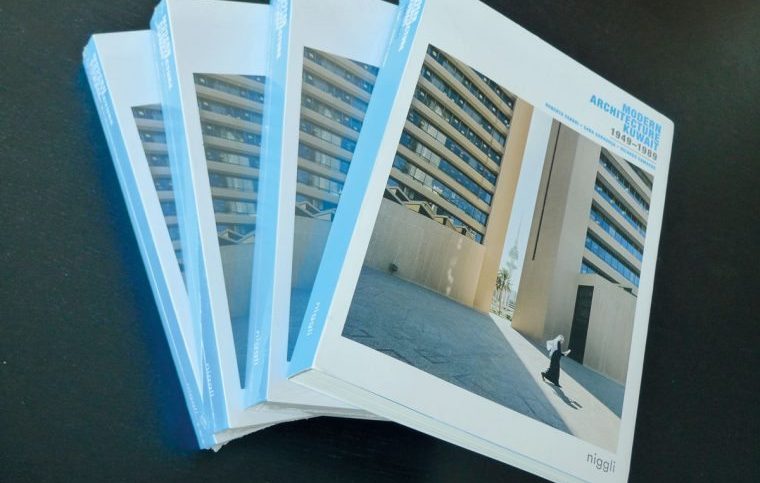An architectural gem, Modern Architecture Kuwait 1949-1989 (MAK) offers incredible insight into Kuwait’s urban landscape. Published and supported by Dar Al-Athar Al-Islamiyyah and the Kuwait Foundation for the Advancement of Sciences, the publication presents 150 plus projects spanning over a 40-year period. Several years in the making, this book offers a wealth of information for aspiring architects, historians and, more importantly, the general public alike. Dubbed as the “first systematic analysis” of modern Kuwaiti architecture, MAK takes us on a journey through Kuwait’s urban history: From the inception of the oil industry to the years leading up to the Iraqi invasion. Penned by Roberto Fabbri, Sara Saragoça Soares and Ricardo Camacho, MAK offers an insight into the elapsed structures that make up Kuwait’s urban landscape.
Kuwait has stood witness to transformations of astonishing depths over the last 40 years. With social and civic changes, the country has observed its “built environment” go from an old coastal town to an engaging metropolis. While the country might not be brand new, creating the ever-changing landscape we see today took a lot of effort and diligent planning. Wanting to create a bigger country for its people, Kuwait began expanding into its uninhabited environment to create an entire city from the ground up – and according to the book “almost from scratch.”
Going through this book gives you a sense of what it was like during this 40-year period in architecture. It’s a more intimate glimpse into the country back then versus now, and how the city’s integrity was at the heart of every project conceived. An educational overview, MAK’s purpose is to highlight the architectural heritage of the country – a blueprint into the past. No stone was left unturned during the research phase as the team of authors investigated every resource available and known to compile such an extensive publication. The collection looks into each architectural structure for its specific quality and charm, inspecting each building and plan’s design methodology, and how it was adapted given the environmental conditions surrounding it.
Perhaps the more interesting specimens to examine in this book are the unbuilt projects. Scale models and floor plans have been laid for these buildings and functions assigned – but alas, theses projects never made it into completion. Examples of such buildings are the 1958 Government Hotel, 1977-1984 Mirqab Transportation Centre, 1960 Kuwait National Museum Competition and the 1968 Kuwait Sports Centre. MAK even goes as far as informing the reader the status of each building surveyed. Be it under the threat of demolition [the Kuwait Embassy in Tokyo, Japan and the Al Sabah Hospital are examples of that], in use, modified or even partially built and under threat like Al-Sawaber Housing Complex; every condition is mentioned.
Leaving an everlasting mark on the urban landscape, the contractors, planners and designers thought each building proposal through no matter the circumstances. The authors, knowing that, have ensured that their work is immortalized within the pages of this book. MAK serves as a reminder of the beautifully clear vision served through Kuwait’s architectural history in chronological order, including a timeline elaborating on the regional context and biographies on each designer, planner and contractor commissioned.
Modern Architecture Kuwait 1949-1989 is published in both English and Arabic and can be purchased at Dar Al-Athar Al-Islamiyyah or online through this link.











